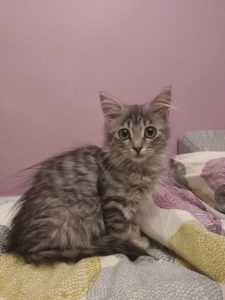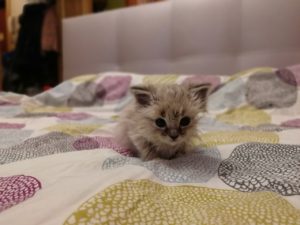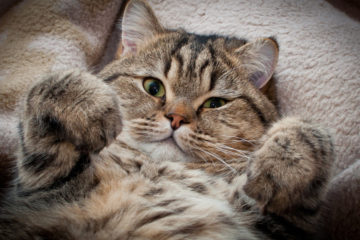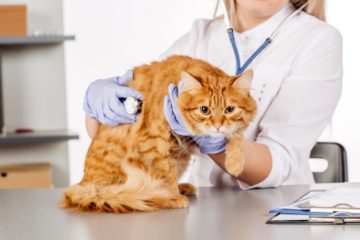Synonyms: inflammation of the conjunctiva or Mucous Membrane
of the Eye; External or Simple Ophthalmia
This condition is very common in cats, chiefly on account of
its characteristic association with feline distemper. In all animals, the
conjunctiva seems especially vulnerable to congestive or inflammatory
processes, because of its great sensibility to external or internal impressions
and its ample blood and lymphatic supply. There are several forms mainly
recognized:
Feline eye Infection
-Feline Viral Rhinotracheitis (FVR) (or Feline Calicivirus)
are believed to be a general reason for conjunctivitis. A herpesvirus is
-Such bacteria as Streptococci, Staphylococci, Chlamydophila
-Systemic infections are often ushered in by catarrh of the
conjunctival mucous membranes, a fact which is well and frequently exemplified
in cases of distemper.

Non-infection
-The allergy could be
-Mechanical and chemical influences of every kind are
variously responsible for the condition, as examples of which may be enumerated
sharp dust, pungent smoke, chemical fumes or solutions, blows, wounds, etc.. It could initiate the secondary contaminated by bacteria.
One or both eyes may be affected, and age appears to exert
no influence upon the incidence of the disease. In the malady appears most
frequently to be unilateral.
 Symptoms
Symptoms
Like catarrhs of other mucous membranes, conjunctivitis is
accompanied by:
– increased redness, pink eye;
– swelling around the eye;
– tenderness of the membrane, with an abnormal flow of tears
in the early stages.
The latter symptom is often more apparent than the former,
though, as the condition increases in severity, the inflammatory phenomena are also augmented, while the mucous discharge becomes mucopurulent or even purulent. Generally, there is great irritability of the eye, which the animal denotes by incessantly rubbing its face on the ground or with its paws. The swollen membrane protrudes into the palpebral fissure and impedes an easy view of the cornea. There is more or less fear of light and marked resistance to clinical examination.
Discharges continue to run down the
In some cases, there is marked edema of the eyelid. The
cornea becomes opaque, and if the condition is long sustained, or if the
discharges are not frequently washed away,
bacteria may complicate matters.
Treatments.
The first procedure is to discover the cause and, if
possible, remove it. The second important point is to ensure that no discharges
are permitted to remain long in contact with the eye or its appendages. The
warm water used for irrigating the eye. That may be used twice daily, but if
the affection is particularly obstinate or tends to become chronic you should use an antibiotic. Prior to the instillation of any of these agents, it is very helpful to bathe the eye generously with a warm solution of black tea with chamomile to reduce the pain and inflammation. Some precaution against self-mutilation should be taken, or one’s best endeavors may be undone in a few moments. The cat should be in a darkened room and not be allowed to sit before a fire. 
If your vet achieved one of this diagnosis, you can use such
treatments as:
Herpesvirus is often mild, but the cat stays a vector. In sever, cases can be used the antiviral therapy. As immune-stimulant sometimes applied L-lysine. Also, specific antibiotics are taken if a secondary contagion is represented.
The best therapy of Chlamydophila or mycoplasma
conjunctivitis is antibiotics such as tetracycline eye’s cream or
azithromycin oral antibiotic
The Eosinophilic or Allergic conjunctivitis is treated by corticosteroid salve or eye drops and drugs for decreasing the allergy.


